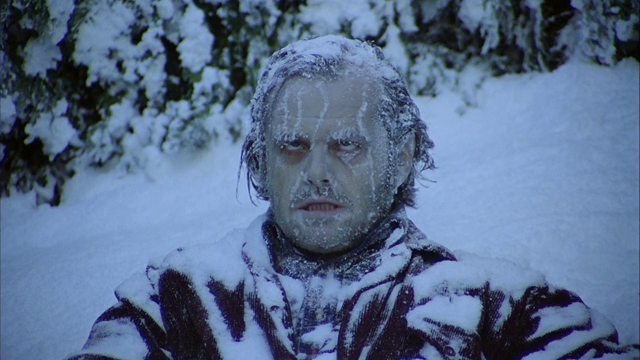I know that even in the supposedly warm climes like Afghanistan the temperatures can drop to killer levels of cold. Now, imagine how cold it can get in places that are actually traditionally considered to be cold places. Then add in some wet clothes. And you have a recipe for disaster. Unless you’re this guy:
An interesting article that explores the mechanics of freezing to death and, interestingly, the mechanics of not freezing to death. I did find this part very illuminating:
“When you come out of the water you get evaporative cooling,” says Tipton. “This is a really potent way of losing heat from the body.” Ordinarily you would want to strip off and put dry clothing on, but in the absence of that, climbing into a large plastic bag will reduce evaporative cooling and convective cooling.
“If you get someone wet at 4C and they have got a litre of water in their clothing; if all of that water evaporates they are going to have a fall in body temperature of 10C,” says Tipton. “If you put them through the same scenario and then put them in a plastic bag they can use their body to heat up that water. It is contained in the bag so it cannot evaporate away. Those people lost half a degree, so they were 20 times better off.”
Seems like everyone in hunting camp carries those deck-of-card-sized thin mylar ‘space blankets’. Turns out, according to this article, that you might be better served with a big ol’ contractor-grade garbage bag. Personally, I rather like these. But what I’m a bigger fan of is a gigantic conflagration that lights up the countryside like some sort of flaming hellscape. Problem is, of course, that if you wait until you’re freezing to death to build a fire you’re going to freeze to death because your manual dexterity and clear-headedness went out the window a few seconds after you fell through the ice. That’s where things like these come in handy. In practice, I go way overboard on flammables when it comes to packing stuff for wandering through hills….flares, fuel cubes, lifeboat matches, waxed dryer lint, and, if I have room for it, a tiny fuel bottle of kerosene. Except for the small fuel bottle, everything fits in an M4 pouch which means there’s no reason to leave it behind anytime you step off the pavement. Whatever you wind up packing, make your choices with an eye towards having hands that are so frozen you can barely manipulate your fingers… big, clumsy, fumbling movements will be the order of the day when need a fire now..plan accordingly.
 But, back to the article at hand, freezing to death (or hypothermia, if you want to get technical, I suppose) apparently doesn’t have to be your fate if you can keep a clear head, a little extra poundage around the abdomen, and make good decisions. Of course, dressing for the occasion also comes in handy…wool, synthetics, etc.
But, back to the article at hand, freezing to death (or hypothermia, if you want to get technical, I suppose) apparently doesn’t have to be your fate if you can keep a clear head, a little extra poundage around the abdomen, and make good decisions. Of course, dressing for the occasion also comes in handy…wool, synthetics, etc.
And don’t let the calendar fool you….lotsa people die of hypothermia in August. All it takes is a fast summer thunderstorm, a steady blowing wind, and maybe some cool temps at a high altitude and you are in big trouble.

the old school road flares were the go to emergency fire starters for me in the wilderness. Those things used to continue to burn under water! I use the smaller Orion flares now and make penny stoves out of beer cans. A 12 oz bottle of HEET (methanol) is a lot of BTUs. Thinking of switching to Everclear so at least I could drink it if thinks really get bad (:
https://www.youtube.com/watch?v=PmoL-2slazo
That was a cool video. Thanks
Yep, I second the road flare, plus all the other stuff you carry.
I live far further south than the vast majority of U.S. citizens. Way down in south Texas, hard up against Mexican border. Cold down here is a hard freeze which hardly EVER happens. Overnight low – yeah, but sustained freezing all day – nope.
Wind and damp are dangerous even when temps aren’t freezing cold. Most hypothermia victims are in warmer temperatures. Dead air is an awesome insulator.
That Maine Hermit fellow who survived Maine winters for over 20 years living full time in a tent had a certain method. He slept during the day when it was warmer, and moved around most of the night to generate body heat.
I have made vapor barrier sleeping bag liners in the past. They work!
https://sectionhiker.com/vapor_barrier_clothing/